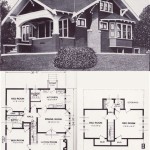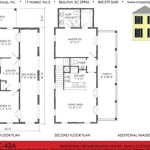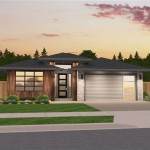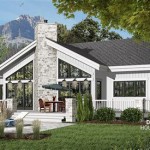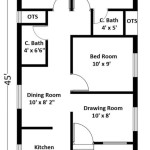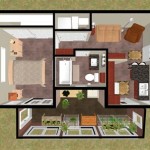A tiny house floor plan is a layout for the interior organization of a tiny house, which is typically a small, mobile, and often minimalist dwelling. These floor plans are designed to optimize space and create efficient, comfortable living quarters within a limited footprint, maximizing functionality and minimizing waste.
Tiny house floor plans often incorporate innovative design solutions, such as lofts for sleeping areas, under-stair storage, and multi-purpose furniture, to maximize space utilization. They may include features such as kitchenettes, bathrooms, and living areas, all within a compact layout. These plans can be tailored to individual needs and preferences, allowing for customized living experiences in a small and sustainable environment.
In the following sections, we will explore different types of tiny house floor plans, their advantages and disadvantages, and provide practical advice on choosing the best plan for your needs.
Tiny house floor plans are carefully designed to make the most of limited space. Here are 9 important points to consider when designing or choosing a tiny house floor plan:
- Maximize vertical space
- Create multi-functional areas
- Use built-in storage
- Consider a loft for sleeping
- Plan for natural light
- Optimize kitchen and bathroom
- Allow for outdoor space
- Consider accessibility
- Stay within budget
By following these points, you can create a tiny house floor plan that meets your needs and provides a comfortable and efficient living space.
Maximize vertical space
In a tiny house, every square foot counts, so it’s important to make the most of the vertical space available. There are several ways to do this:
- Build up
One way to maximize vertical space is to build up. This can be done by adding a loft for sleeping or storage, or by installing shelves and cabinets that reach all the way to the ceiling.
- Use furniture with vertical storage
Another way to maximize vertical space is to use furniture with vertical storage. This could include things like bookshelves, cabinets, and drawers that are tall and narrow. You can also use ottomans and other pieces of furniture with built-in storage.
- Hang things on the walls
If you don’t have a lot of floor space, you can also use the walls to store things. Hang shelves, baskets, and other items on the walls to keep your belongings organized and out of the way.
- Use dividers to create separate spaces
If you want to create separate spaces in your tiny house, you can use dividers or screens to do so. This can be a good way to create a sleeping area, a living area, or a workspace.
By maximizing vertical space, you can create a tiny house that feels more spacious and comfortable.
Create multi-functional areas
One of the most important things to consider when designing a tiny house floor plan is how to create multi-functional areas. This means designing spaces that can be used for multiple purposes. For example, a living room could also be used as a dining room or a workspace. A bedroom could also be used as a storage area or a playroom. By creating multi-functional areas, you can make the most of the space you have and create a more flexible and comfortable living environment.
Here are some tips for creating multi-functional areas in your tiny house:
- Use furniture that can be used for multiple purposes
There are many pieces of furniture that can be used for multiple purposes. For example, a coffee table can also be used as a dining table or a work surface. A sofa can also be used as a bed. By choosing furniture that can be used for multiple purposes, you can save space and create a more flexible living environment.
- Create built-in storage
Built-in storage is a great way to maximize space and create multi-functional areas. For example, you could build a bed with built-in storage drawers. You could also build a couch with built-in storage shelves. By creating built-in storage, you can keep your belongings organized and out of the way.
- Use dividers to create separate spaces
If you want to create separate spaces in your tiny house, you can use dividers or screens to do so. This can be a good way to create a sleeping area, a living area, or a workspace. Dividers can also be used to create privacy.
- Be creative
When it comes to creating multi-functional areas, there are no limits. Be creative and come up with your own solutions. The more creative you are, the more you will be able to make the most of the space you have.
By creating multi-functional areas, you can create a tiny house that is more spacious, comfortable, and flexible. So get creative and start designing your own multi-functional spaces today!
Use built-in storage
Built-in storage is a great way to maximize space and create multi-functional areas in your tiny house. By incorporating built-in storage into your floor plan, you can keep your belongings organized and out of the way, creating a more spacious and comfortable living environment.
There are many different ways to use built-in storage in your tiny house. Some popular options include:
- Cabinets
Cabinets are a great way to store a variety of items, from clothes and linens to dishes and cookware. You can install cabinets in the kitchen, bathroom, bedroom, and living room. Cabinets can be customized to fit any space, and they can be designed to match the style of your tiny house.
- Drawers
Drawers are another great way to store items in your tiny house. Drawers are ideal for storing smaller items, such as utensils, silverware, and spices. You can install drawers in the kitchen, bathroom, and bedroom. Drawers can also be customized to fit any space.
- Shelves
Shelves are a versatile way to store items in your tiny house. Shelves can be used to store books, plants, dishes, and other items. You can install shelves in the kitchen, bathroom, bedroom, and living room. Shelves can be customized to fit any space, and they can be designed to match the style of your tiny house.
- Storage benches
Storage benches are a great way to add extra seating and storage to your tiny house. Storage benches can be used in the living room, bedroom, or entryway. Storage benches can be customized to fit any space, and they can be designed to match the style of your tiny house.
By incorporating built-in storage into your tiny house floor plan, you can create a more spacious, comfortable, and organized living environment.
Here are some tips for using built-in storage in your tiny house:
- Plan ahead
When designing your tiny house floor plan, take some time to think about where you will need storage. Consider the items you will need to store and the amount of space you will need. This will help you determine the types of built-in storage you need and where to place them.
- Choose the right materials
The materials you choose for your built-in storage will depend on the items you will be storing and the style of your tiny house. For example, if you are storing heavy items, you will need to use sturdy materials, such as wood or metal. If you are storing delicate items, you may want to use softer materials, such as fabric or plastic.
- Maximize vertical space
When installing built-in storage, be sure to maximize vertical space. This means using shelves, drawers, and cabinets that reach all the way to the ceiling. You can also use stackable bins and baskets to maximize storage space.
- Keep it organized
Once you have installed your built-in storage, it is important to keep it organized. This will help you find the items you need quickly and easily. Use labels, bins, and baskets to keep your belongings organized and out of the way.
By following these tips, you can use built-in storage to create a more spacious, comfortable, and organized tiny house.
Consider a loft for sleeping
If you’re looking for a way to save space in your tiny house, consider adding a loft for sleeping. Lofts are a great way to create a separate sleeping area without taking up valuable floor space. They can also be used for storage or as a play area for children.
There are many different ways to design a loft. Some lofts are accessed by a ladder, while others have stairs. Some lofts are open to the rest of the house, while others are enclosed with walls or curtains. The type of loft you choose will depend on your needs and preferences.
If you’re considering adding a loft to your tiny house, there are a few things to keep in mind. First, you’ll need to make sure that your ceiling is high enough to accommodate a loft. Second, you’ll need to decide how you want to access the loft. Third, you’ll need to consider how you will ventilate the loft. Finally, you’ll need to make sure that the loft is safe and secure.
Here are some tips for designing a loft for sleeping:
- Make sure the ceiling is high enough
The first step is to make sure that your ceiling is high enough to accommodate a loft. A loft typically needs to be at least 6 feet tall, but 7 feet is more comfortable. If your ceiling is not high enough, you may need to raise the roof or lower the floor.
- Decide how you want to access the loft
Once you know how high your loft will be, you need to decide how you want to access it. There are two main options: ladders and stairs. Ladders are more space-efficient, but they can be difficult to climb, especially if you’re carrying something heavy. Stairs are more comfortable and safer, but they take up more space.
- Consider how you will ventilate the loft
It’s important to make sure that your loft is well-ventilated. This will help to prevent condensation and mold. There are a few different ways to ventilate a loft, including adding windows, vents, or a fan.
- Make sure the loft is safe and secure
Finally, you need to make sure that your loft is safe and secure. This means adding railings to prevent falls and making sure that the loft is structurally sound. You may also want to consider adding a smoke detector and a carbon monoxide detector to the loft.
By following these tips, you can design a loft for sleeping that is safe, comfortable, and space-efficient.
Plan for natural light
Natural light can make a tiny house feel more spacious and inviting. It can also help to reduce your energy bills. When designing your tiny house floor plan, be sure to consider how you can maximize natural light.
Here are some tips for planning for natural light in your tiny house:
- Place windows strategically
The best way to maximize natural light is to place windows strategically throughout your tiny house. South-facing windows will let in the most light, but east- and west-facing windows can also provide good light. Avoid placing windows on the north side of your house, as this will not let in much light.
- Use large windows
If you want to let in as much natural light as possible, use large windows. Floor-to-ceiling windows are a great way to maximize light and create a sense of spaciousness.
- Add skylights
Skylights are a great way to add natural light to a room without taking up any wall space. They are especially effective in rooms with high ceilings.
- Use light-colored finishes
Light-colored finishes, such as white or cream, will reflect light and make your tiny house feel more spacious. Avoid using dark colors, as these will absorb light and make your house feel smaller.
By following these tips, you can plan for natural light in your tiny house and create a more spacious, inviting, and energy-efficient home.
Optimize kitchen and bathroom
The kitchen and bathroom are two of the most important rooms in any house, and they are especially important in a tiny house. These rooms need to be functional and efficient, but they also need to be comfortable and inviting. Here are some tips for optimizing the kitchen and bathroom in your tiny house floor plan:
- Kitchen
The kitchen is the heart of the home, and it is especially important to make the most of the space you have in a tiny house. Here are some tips for optimizing your kitchen layout:
- Use a galley kitchen layout
A galley kitchen is a long, narrow kitchen with cabinets and appliances on both sides. This layout is efficient and space-saving, and it is a good choice for tiny houses.
- Use multi-functional appliances
Multi-functional appliances can save you a lot of space in your kitchen. For example, you could use a microwave that also functions as a convection oven or a refrigerator that also has a freezer compartment.
- Use vertical space
Make use of vertical space in your kitchen by installing shelves and cabinets that reach all the way to the ceiling. You can also use stackable bins and baskets to maximize storage space.
- Keep it organized
A well-organized kitchen is a more efficient kitchen. Use drawer organizers, shelf liners, and other organizational tools to keep your kitchen tidy and clutter-free.
- Use a galley kitchen layout
- Bathroom
The bathroom is another important room in a tiny house. Here are some tips for optimizing your bathroom layout:
- Use a composting toilet
Composting toilets are a great way to save space and water in your bathroom. They are also more environmentally friendly than traditional toilets.
- Use a space-saving sink
There are many different types of space-saving sinks available, such as corner sinks and pedestal sinks. These sinks can help you save valuable space in your bathroom.
- Use a shower instead of a bathtub
Showers are more space-efficient than bathtubs, and they can also help you save water. If you want to relax in a bath, you can always use a portable bathtub.
- Keep it organized
Just like the kitchen, a well-organized bathroom is a more efficient bathroom. Use drawer organizers, shelf liners, and other organizational tools to keep your bathroom tidy and clutter-free.
- Use a composting toilet
By following these tips, you can optimize the kitchen and bathroom in your tiny house floor plan and create a more functional, comfortable, and inviting home.
Allow for outdoor space
One of the best things about living in a tiny house is the opportunity to be close to nature. Whether you’re enjoying a morning coffee on your porch or gardening in your backyard, spending time outdoors can help you relax and rejuvenate. That’s why it’s important to allow for outdoor space in your tiny house floor plan.
There are many different ways to incorporate outdoor space into your tiny house floor plan. One popular option is to build a deck or patio. This can provide a great place to relax and entertain guests. If you have a green thumb, you could also create a small garden. This could be a great way to grow your own food or simply enjoy the beauty of nature.
Another option is to build a tiny house on wheels. This will give you the flexibility to move your house to different locations, so you can always be close to nature. If you’re not sure where you want to live, this could be a great way to try out different locations before settling down in one place.
No matter how you choose to incorporate outdoor space into your tiny house floor plan, it’s important to make sure that you have a space where you can relax and enjoy the outdoors. This will help you create a more comfortable and enjoyable living environment.
Consider accessibility
Accessibility is an important consideration for any home, but it is especially important for tiny houses. Tiny houses are often built on wheels, which makes them easy to move. This can be a great advantage for people who want to live a nomadic lifestyle or who need to move frequently for work. However, it is important to make sure that your tiny house is accessible, even if you do not plan on moving it often.
There are a few things to consider when designing an accessible tiny house. First, you need to make sure that the doorways and hallways are wide enough for a wheelchair to pass through. You also need to make sure that there are no steps or other obstacles that could make it difficult for someone with a disability to enter or exit the house. Second, you need to make sure that the kitchen and bathroom are accessible. This means that the counters and sinks need to be at a height that is accessible to someone in a wheelchair, and that there is enough space for someone in a wheelchair to move around.
Finally, you need to make sure that the electrical outlets and switches are placed at a height that is accessible to someone in a wheelchair. You may also want to consider installing grab bars in the bathroom and shower. By following these tips, you can create an accessible tiny house that is comfortable and safe for everyone.
Here are some specific examples of how to make a tiny house more accessible:
- Widen doorways and hallways
The standard width for a doorway is 32 inches, but for a wheelchair-accessible doorway, you will need to widen it to at least 36 inches. You may also want to widen the hallways to make it easier for someone in a wheelchair to move around.
- Lower counters and sinks
The standard height for a kitchen counter is 36 inches, but for a wheelchair-accessible kitchen, you will need to lower the counters to between 28 and 34 inches. You will also need to lower the sink to a height that is accessible to someone in a wheelchair.
- Install grab bars
Grab bars can provide support and stability for someone getting in and out of the shower or bath. You can install grab bars in the bathroom, shower, and next to the toilet.
- Place electrical outlets and switches at an accessible height
Electrical outlets and switches should be placed at a height that is accessible to someone in a wheelchair. This means that they should be no higher than 48 inches from the floor.
By following these tips, you can create an accessible tiny house that is comfortable and safe for everyone.
Stay within budget
One of the most important things to consider when designing a tiny house floor plan is your budget. Tiny houses can range in price from a few thousand dollars to over $100,000, so it is important to set a budget and stick to it. There are a few things you can do to stay within budget when designing your tiny house floor plan:
- Choose a simple design
The more complex your tiny house floor plan, the more it will cost to build. Choose a simple design with a few rooms and a simple layout. This will help you save money on materials and labor.
- Use recycled materials
One way to save money on your tiny house is to use recycled materials. You can find recycled materials at salvage yards, construction sites, and even on Craigslist. Using recycled materials can help you save money and reduce your environmental impact.
- Do it yourself
If you are handy, you can save a lot of money by doing the construction work yourself. However, it is important to make sure that you have the skills and experience necessary to do the job safely. If you are not confident in your abilities, it is best to hire a professional.
- Shop around
Before you buy any materials or hire any contractors, be sure to shop around and compare prices. You may be able to find the same materials or services for a lower price if you shop around.
By following these tips, you can stay within budget when designing your tiny house floor plan. Remember, the most important thing is to create a tiny house that meets your needs and fits your budget.









![The Top 8 Tiny House Floor Plans [2023 Choosing Guide] Tiny Living Life](https://i0.wp.com/inylivinglife.com/wp-content/uploads/2019/07/floor-plans.png)
Related Posts

